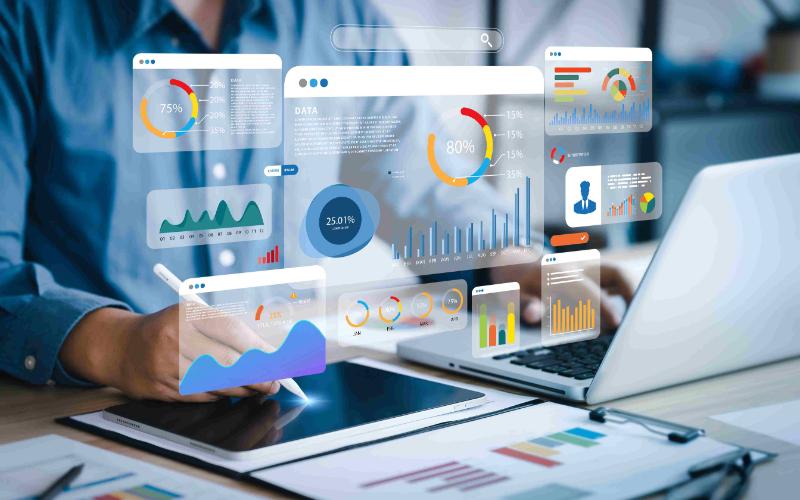
Artificial intelligence (AI) has become a key ally for those of us who work with data. On one hand, it allows us to streamline cleaning processes that used to take hours, and on the other, it helps us create clearer and more effective data visualizations. For this reason, at Datasketch, we’re sharing five ways you can apply AI in your data work, from processing and cleaning data to creating charts.
1. Perform JOINS on Small Tables
One of the most practical uses of AI in data handling is the ability to perform “JOINS,” a process where two datasets are merged into one using a common column.
While a traditional JOIN in SQL or spreadsheets can be tedious, AI-powered tools can automatically identify relationships between columns, suggest join keys, and execute the combination, even when field names don’t match exactly. This speeds up analysis and helps discover relationships between datasets that previously required hours of manual work.
In this way, AI can automate key identification and table merging, saving time and reducing errors.
2. Clean Databases
Data cleaning can consume a lot of time, especially when working with disorganized datasets or those with structural errors. However, artificial intelligence can be a great ally: it can identify rows that don’t match between tables, detect duplicates or inconsistencies, and even suggest corrections. Instead of reviewing records one by one, the analyst receives precise alerts about problematic data, making it easier to make fast, reliable decisions.
3. Suggest Titles and Subtitles for Charts
A data visualization requires not only clear numbers but also a message that communicates its meaning. Artificial intelligence can be a great partner in generating attractive titles and subtitles that are consistent with the visualization’s context, and can even translate them automatically into other languages. It is essential to consider the chart’s target audience and format, and to reflect these details explicitly in the prompt given to the AI.
4. Write HTML Code
Beyond the data itself, many analysts need to publish their findings on websites or interactive dashboards. AI can help write basic HTML code or generate ready-to-use snippets, such as tables, embedded charts, or simple styles. This removes technical barriers and allows teams to focus on the content and the story they want to tell with the data.
5. Assist in Design and Data Visualization
Designing effective visualizations isn’t always easy, especially for those without a design background. AI can offer immediate feedback on color contrast, visual hierarchy, text legibility, and element layout. This type of feedback helps make any visualization clearer and more attractive, even for audiences unfamiliar with design standards.
At Datasketch, we have developed various free tools to facilitate data work. If you want to take your projects to the next level and experiment with these functions, we invite you to explore the extensions in the Datasketch